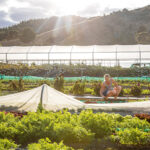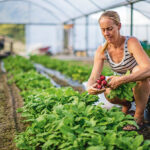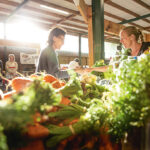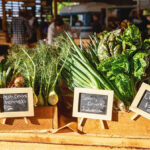Healthy soil, healthy planet: How these farmers are cherishing one of New Zealand’s greatest resources
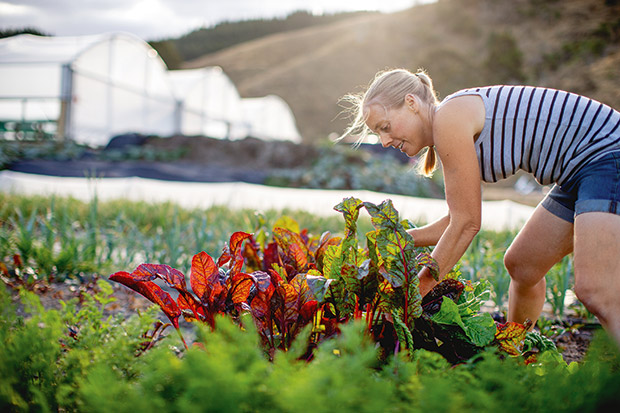
Healthy soil is the basis of a healthy planet, and without it, there is no nourishment for its inhabitants. Meet three farmers treating their dirt with the greatest respect.
Words: Kate Coughlan Photos: Camilla Rutherford
Soil is a living system, bursting with billions of microorganisms such as fungi, microbes, insects and worms that beaver away, breaking down material and delivering nutrients to plant roots.
New Zealand’s most fertile soil is a national treasure, and the debate about how best to preserve it is becoming louder. Intensive farming can lead to soil degradation: thinning layers of topsoil, compaction, nutrient imbalances, acidification, salination, waterlogging and a loss of soil-life biodiversity.
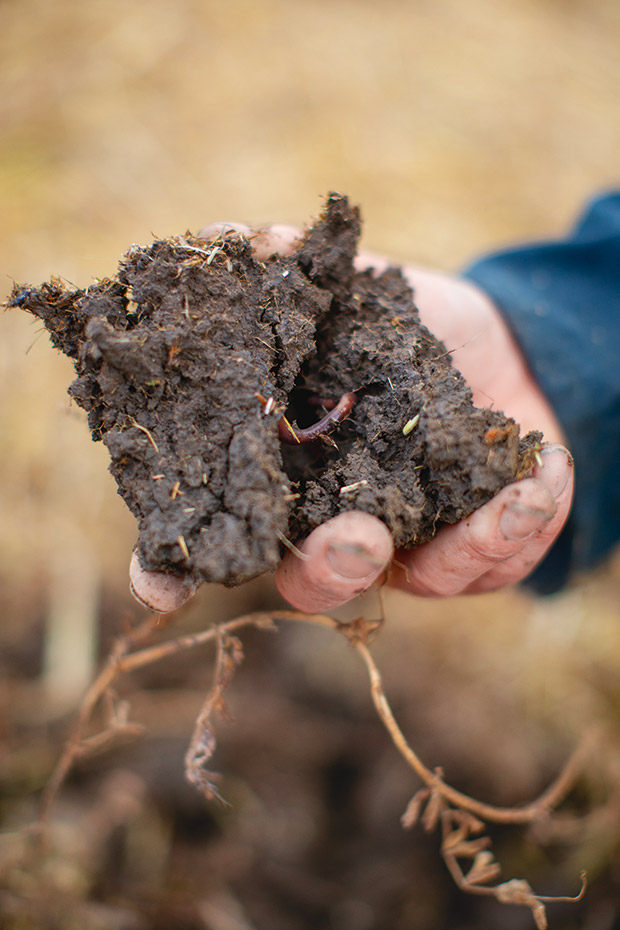
Setting soil health as the No.1 priority brings its challenges. These three farmers in different fields of food production say the rewards outweigh the setbacks even if the bank balances don’t always indicate that.
A grain and seed farmer from Canterbury, a small-market gardener from Ngāruawāhia and a beef farmer from Raglan share their experiences.
Cliff & Tracey Bayliss
Land area: 270 hectares
Soil type: Karioi ash
Where: Raglan, Waikato
Produce: Fattening 80 to 100 beef cattle annually
Market: Direct to customers through daughter Tracey Bayliss’ online brand, Grandad’s Beef, which provides meat boxes to order and through conventional processors
Main regenerative practice: Four decades of minimal inputs using a little lime from time to time mixed with humates, including specific trace elements if soil testing shows there’s an adjustment needed.
Key insight: The roots of the grasses are as important as the tops. Keeping a good length of herbage on top of the soil indicates how long the roots are below. Deep roots help keep the soil aerated and allows them to absorb every drop of water, which is essential in a drought-vulnerable region.
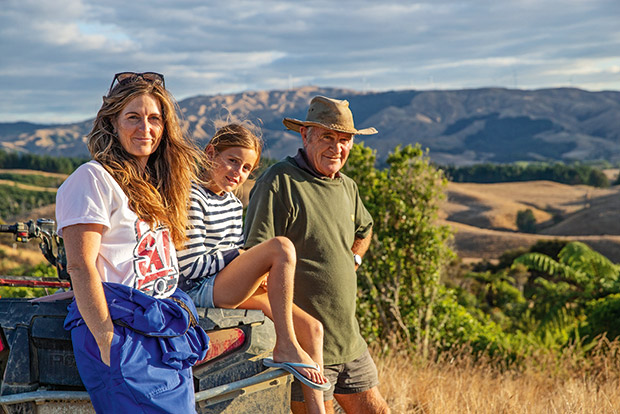
Farmer Cliff Bayliss with his daughter Tracey and her daughter, Brooklyn.
Cliff Bayliss watched a sick cow after a vet’s visit and noticed something curious. She didn’t rush straight to the lush paddock of ryegrass and clover but hunted around the margins of an old cowshed, eating a variety of what Cliff thought were just weeds.
“It struck me that she was after medicine, and the rye and clover pasture wasn’t doing her any good. Instinctively, she knew what she needed. As a young farmer, I wondered why the fertilizer companies pushed farmers to pour on more and more NPK (nitrogen, phosphorus and potassium) and urea.
“The mantra was to use more and get more. But I reckon that NPK is doing more harm than good, and urea causes the land to compact, and then the nitrates run off. I’ve watched cows circle a whole paddock of urea-fed pasture, looking for the grass they wanted to eat.
“Farmers get blamed for a lot, but the advice they get from the fertilizer companies is to use more. I don’t believe in it. We have ruined the island of Nauru, where we got all of New Zealand’s fertilizer for years. It’s now totally destroyed after mining for fertilizer, and the same is happening in Morocco. The world’s longest conveyor belt is moving it across the desert after extraction, and the indigenous people are homeless. I can’t support that sort of approach, apart from what it does to the soil.”
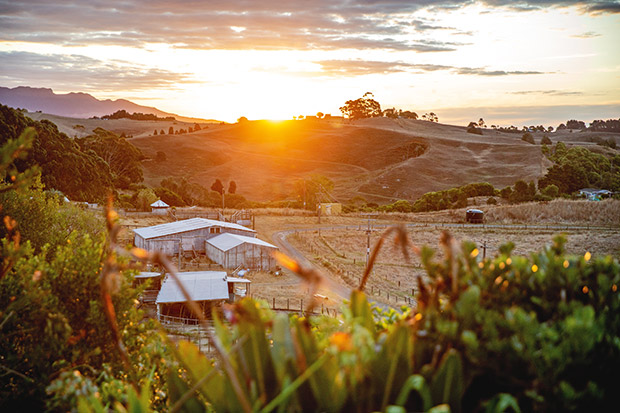
The Bayliss farm, a sheep farm when they purchased it that they have since converted to dairy, hasn’t been re-grassed in 40 years. Cliff says his pastures, which in recent years have been used to fatten beef cattle, are healthy and more than capable of fattening his stock to top weights.
Virtual soil assessments and the Albrecht-Kinsey system of soil fertility are used to assess his soil. If trace element adjustment is indicated, it is done via humates added to the lime.
Daughter Tracey, who lives on the farm and markets Bayliss beef via her direct-to-the-customer brand, is intrigued by how her father watches his land and animals. “Sometimes we will get to the top of a hill, halfway up a fence line, and he’ll say, ‘Let’s stop and take a breather and have a listen.’ He monitors the song of the birds and the sounds of the insects and animals.
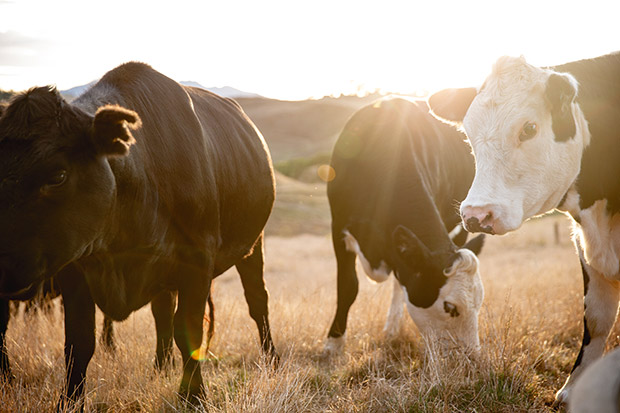
“He can hear a cow pooing, and he knows if that cow is healthy and passing a nice cowpat. This is the knowledge he uses to build the soil and the health of everything on the farm.
“Regenerative farmers might not tell you they’re getting rich, but the interesting thing is that not one of them would go back to farming conventionally. That speaks loudly. They’re not getting paid more for their beef if they sell through conventional processors, but they are enjoying farming much more and can see benefits in their soil, their pastures and their animals.”
Simon Osborne
Land area: 280 hectares
Soil type: Heavy clay loam
Where: Leeston on the Canterbury Plains
Farming method: Intensive arable and sheep
Produce: Linseed (for oil, food and fibre production), oats, wheat (different varieties for milling, bread, pasta and breakfast cereals), barley (for animal feed), vetch, phacelia and clovers
Market: Food manufacturers and seed merchants, and farmers
Main regenerative practice: No-till for nearly five decades, no insecticides. Focus on soil biome health to reduce or eliminate the need for fungicides and synthetic fertilizer and minimal agrichemical input.
Key insight: “Eating healthily, so you sustain a healthy microbiome in your body to help fend off ill health and diseases of old age is exactly what I am doing for my soil. Though the soil is vastly more complex than a human body — believe it or not.”
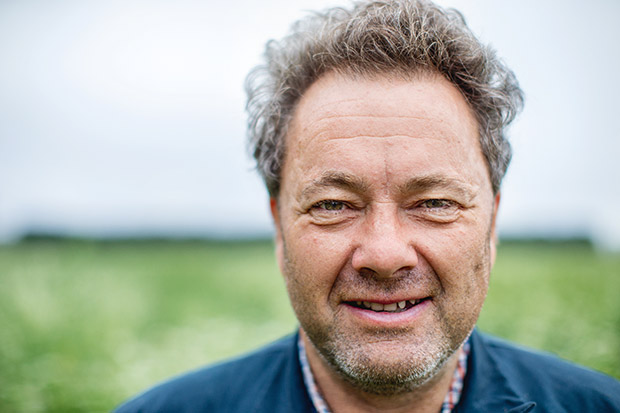
“My soil and farm environment sit front and centre in my priority list. I want to produce healthy, nutritious food with as few toxins as possible. My focus on biological agriculture is to continue to build a healthy farm ecosystem and produce nutritious food.”
“Cropping systems are incredibly complex, with a huge web of inputs and interventions that require close attention and management on a broad scale. But they return a low margin. The cheapest growing techniques are often the most profitable because they produce the highest margins, but environmental quality is not priced anywhere in the system or valued by the market.
There is no market differentiation to reward good environmental stewardship. In fact, you pay the penalty for that due to slightly lower yields, and regulatory compliance costs are the same no matter how you manage your farm.
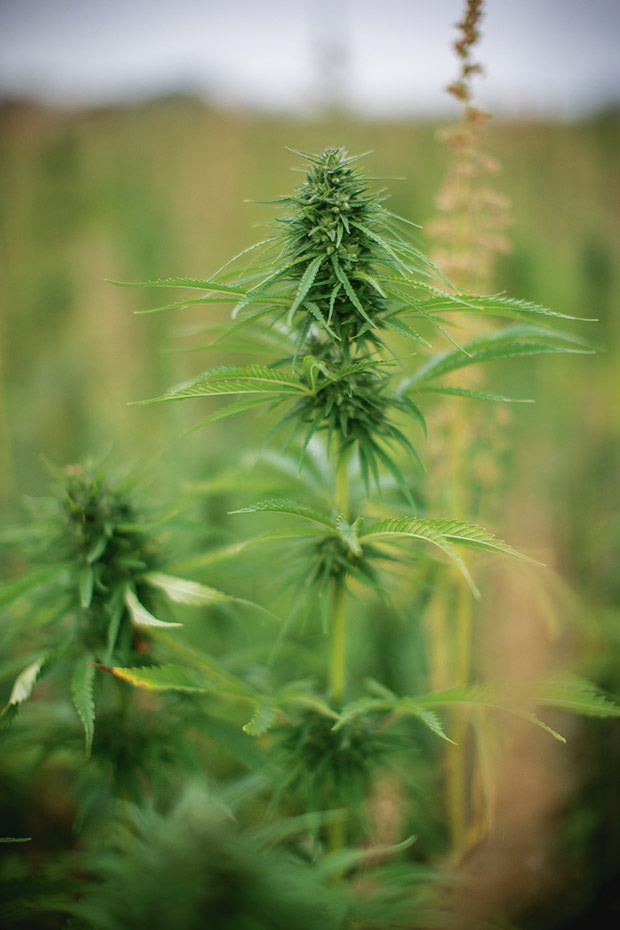
“On my farm, biological or regenerative practices are about minimizing the input of any synthetic fertilizers and fungicides; no insecticides. We do sometimes use agrichemicals in certain circumstances for some jobs and some natural fertilizers.
However, this is nowhere near the amount used in conventional farming. We can do this because we run a no-till system — we haven’t ploughed this land in 47 years. Tillage to control weeds is not something we are prepared to do due to the soil damage it causes. This is where I disagree with the organic farming approach, which heavily relies on diesel-powered machinery to till the soil to control weeds. That wrecks the soil life.”
The other main aspect of Simon’s soil management system is not using synthetic fertilizers. “Cutting right back had a huge benefit on soil health; the crops looked healthier and were healthier, disease pressure was lower, and the weed spectrum changed.
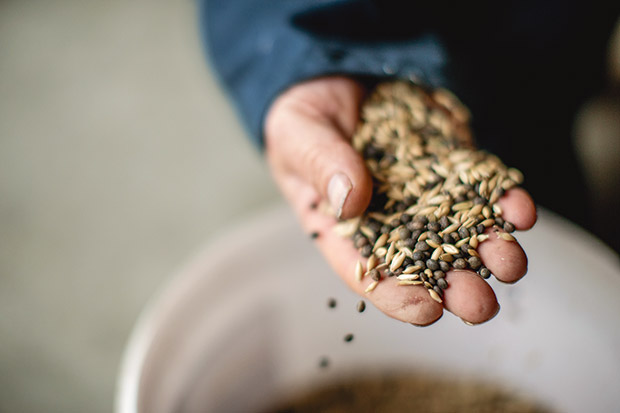
“Farmers are encouraged by industry to use large amounts of very soluble fertilizer, and the plants that seem to thrive best on those are generally considered to be weeds. So, of course, you need a whole range of products to control those weeds.
By buttoning off, transitioning quietly back, and looking more at what the crop needs and then supplying that by strategic use of cover crops to mobilize soil nutrients into bioavailable forms, supplementing with small amounts of fertilizer, trace elements and fish hydrolysate, you can build the microbial life in the soil, which is the bridge to get nutrition into your plants.
“Much of the food we produce is tested for chemical residues, and we do not see any showing up. You look at modern farming with agrichemicals, and you think, ‘How the hell can you justify a lot of the stuff that is done?’ But as technology drives forward, it drives itself. An example: 10 years ago, a whole new generation of fungicides were released to protect cereal and grain crops from fungal disease, but the problem is they kill off any beneficial fungi also there.
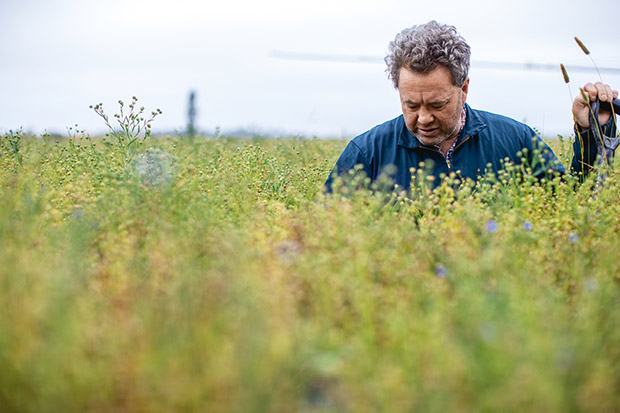
It was a new threshold. People started using the new fungicide, and then they had to keep using it as their farm had lost the resilience to cure itself due to the disruption to the soil fungal networks. At that point, I stepped off the treadmill. I took a different path, and because I was careful and not having any problems with the old products and was only using them when I absolutely had to, everything was still working well.
“All nutrients are circulated by living organisms and require a microbial bridge between soil and plant. So if you build that microbial network, you improve access to nutrition. What we are doing mirrors what people are doing with their health; minimizing disease rather than trying to cure it when it arrives.”
Shannon Wright
Land area: 2600 square metres (650 square metres under tunnel houses)
Soil type: Sandy loam
Where: Ngāruawāhia, Waikato
Farming method: Small-scale market garden
Produce: Five to 10 different salad varieties for salad mixes, microgreens, herbs and vegetables, including broccoli, carrots, turnips, onions, leeks, radishes, cabbages, beetroot
Market: Direct to customers through veggie boxes and at two farmers markets (Cambridge and Hamilton), local Foodstuffs supermarkets and specialty vegetable shops
Main regenerative practice: “We only mix in inputs to the top five centimetres of the soil, and our regenerative and biological practices naturally ‘tickle the system’ to create nutrient-dense soil by feeding the soil life.”
Key insight: Feed your soil as you would feed your gut microbiome.
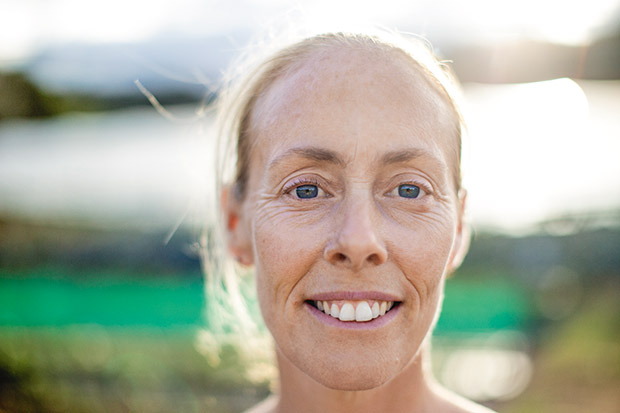
“We are all about renewing, restoring and rebuilding the health of the soil. The few things we mainly put on, feed-wise, are a fish hydrolysate, which is different to fish fertilizer; a liquid humate for soil contact to help feed the microbes; a microbial inoculant [EMNZ] along with Tri-Kelp [a powdered seaweed]; and we soak our transplants in it before planting to reduce shock and use as a foliar feeder.
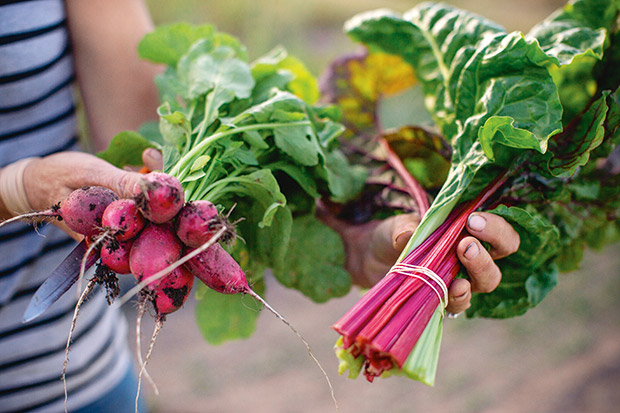
We also foliar-spray calcium little and regularly as well as a lot of compost — vermicast, which we buy from a supplier in Cambridge who is certified organic. It needs to be without any pine or human waste.
“I have ingenious little tools that I use to incorporate just the top five centimetres of soil. The most important is a battery-operated drill, which powers a soil tilther and greens harvester.
The tilther has little blades that mix compost and vermicast into the top 5-10cm of soil, leaving the microbes below untouched. The greens harvester is a work of art. The drill turns a serrated blade along the bottom, which neatly cuts the greens, and a set of soft rope flails spin them back into a catcher bag.”
Harvesting by hand used to take Shannon hours of back-breaking work snipping crops; now she can neatly cut and collect one kilogramme in less than 15 seconds.
“The bonus is the sharp blade does such a neat job of trimming the plants. They happily regrow, allowing me to take three or four harvests from my salad greens.”
A Jang seeder is pushed along by hand, taking seconds to distribute dozens of seeds in neat, straight rows evenly. “I use a specialized fork which slides into the soil well now, but it didn’t at first. It cracks the soil a little bit to break up any compaction from the elements and aerate it.”
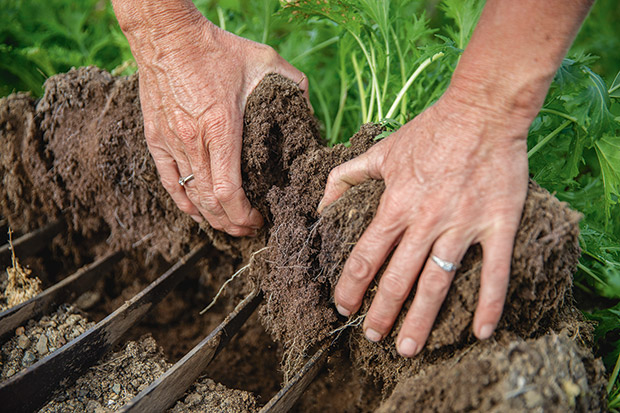
Shannon came to market gardening from an office job and says organic farming has been a massive learning curve in every aspect. “It’s been a big, long journey for four years now, and I’ve been through tough times of questioning why am I doing this — especially in winter. But the connection with nature and with people — hearing their needs and wants and being able to help them with nutrient-dense food — is what feeds me.”
Her small-scale operation is not big enough to accommodate low prices. So she says the old farming paradigm of needing more space, tilling more to produce quantity over quality to sell more cheaply, does not work.
She maintains value by selling directly to her customers as much as possible and is always learning how to provide more flavourful nutrient-dense food while caring for the land and humankind’s impact. Her customers are prepared to support and pay for that.
“We tailor our inputs very carefully, we sell direct to our customers [mostly], and we look after our soil very carefully for minimal impact. So we are increasing the yield from the land each year while increasing soil life and nutrients — this is the approach to food production needed globally.
“I believe regenerating our soils is critical to health globally. Our food system plays a big role in helping our plants heal — repairing our bodies so that they too can heal and be stronger beyond what we currently understand. Our future is regenerative on a global scale. We can grow, learn and transform it all.”
Love this story? Subscribe now!
 This article first appeared in NZ Life & Leisure Magazine.
This article first appeared in NZ Life & Leisure Magazine.
